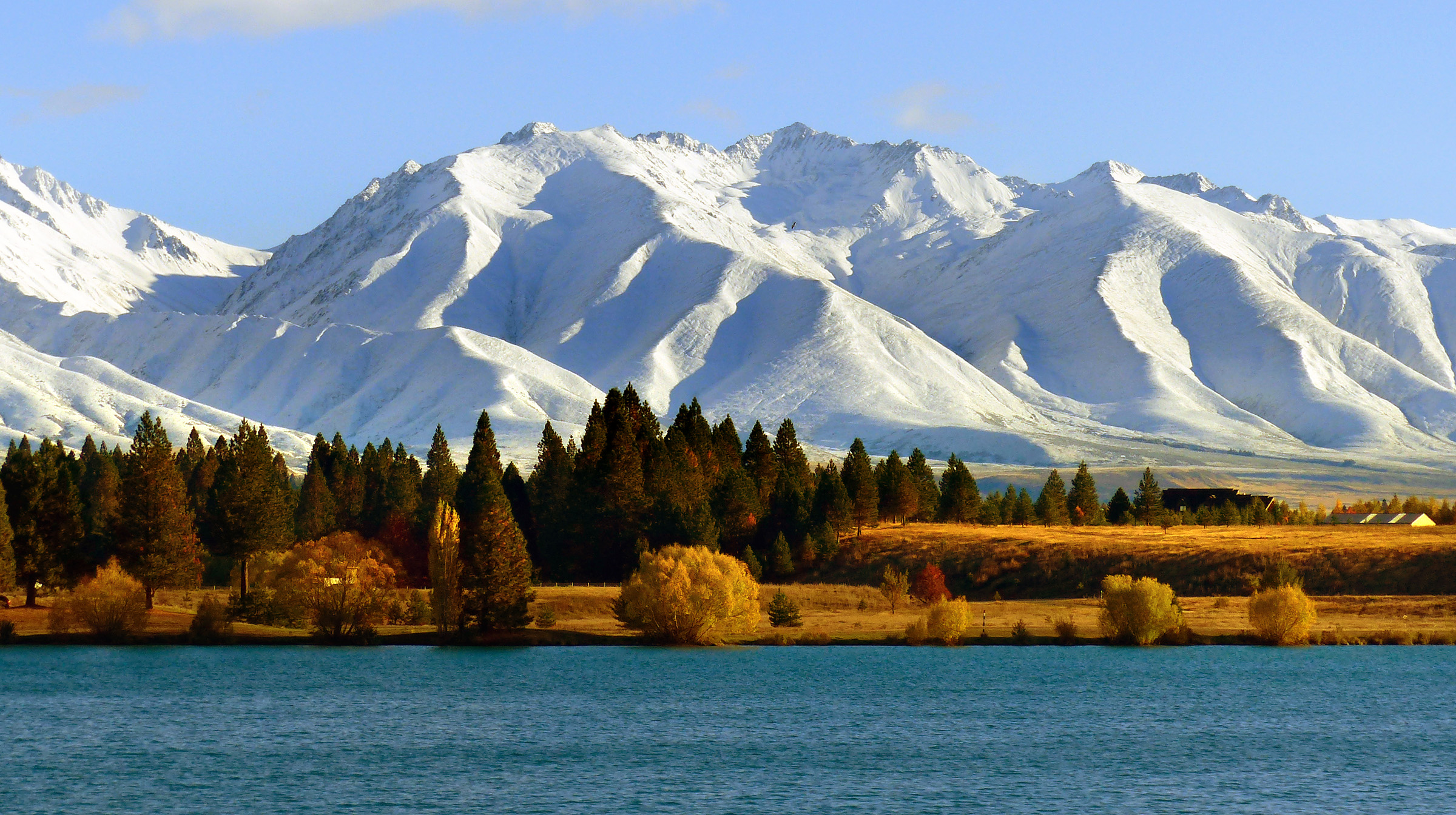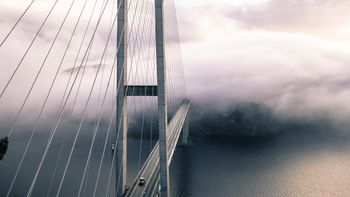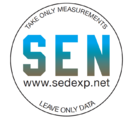Form:Annualmeeting2019

On site registration
Will open soon.
Introduction
Natural hazards impact thousands of people every year; floods, droughts, extreme storms, landslides, wildfires, permafrost erosion all change the Earth's surface and inflict tremendous damage to human infrastructure. Most often, humans respond to disasters "after the fact" and a paradigm shift is needed to a strategy of resilience that would provide a way to reduce vulnerability to disasters and their impacts before they occur. Numerical models of earth surface processes are one tool to simulate natural hazards and provide quantitative pre-event risk assessment. Yet, such assessments are only appropriate if the models capture all important physical processes, when the models are tested and well-vetted, when they are useable and proven accurate. This workshop aims to identify what are critical missing components in our ability to provide better assessment of earth surface change in face of natural hazards. The meeting will bring together experts in earth surface process modeling in a three-day hands-on workshop to identify shortcomings in our current natural hazard process understanding, both fundamentally in the earth surface processes as well as in the modeling approaches and technology. The workshop aims to improve natural hazard modeling for risk assessment, with a special focus on building a next-generation cyberinfrastructure and a community of modern modeling and data analysis practice, including high performance computing techniques.
We are pleased to announce that this year's meeting is co-sponsored by the Sediment Experimentalist Network (SEN) and the Polar RCN.
Objectives and general description
Numerical models of earth surface processes are one tool to simulate natural hazards and provide quantitative pre-event risk assessment. Such assessments are only appropriate if the models capture all important physical processes, when the models are tested and well-vetted, when they are useable and proven accurate. The Geoprocesses, geohazards - CSDMS 2018 workshop aims to:
- Identify new frontiers in fundamental process understanding in earth surface and natural hazards modeling. New algorithms, cyberinfrastructure development and new model couplings appear paramount to explore important process dynamics and linkages.
- Identify needs and develop strategies for model testing, model validation and model benchmarking against natural disasters as they happen, and rapidly afterwards. Massive high-resolution topographic data acquisition allows for more rigorous model to real-world data testing, but what are the obstacles and needs for improved use of disasters as opportunities for improving process models?
- Identify what are critical missing components in our ability to provide better assessment of earth surface change in face of natural hazards. How do we design scenario modeling, how do we communicate the uncertainty in model outcomes?
- Built researcher-to-researcher connections. Better connect earth surface process modelers with modelers of primary and secondary forcings, as well as social sciences and engineers to allow exploration of the human dimensions of natural disasters.
As in past meetings, keynote speakers are by invitation only, and poster presentations are the general media. The meeting will include:
- State-of-the art keynote presentations in earth-surface dynamics and modeling of natural hazards
- Hands-on clinics related to community models, tools and approaches
- Transformative software products and approaches designed to be accessible, easy to use, and relevant
- Breakout sessions discussing:
- Fundamentals of earth surface processes and hazard modeling; missing links and model coupling.
- Disasters are opportunities; challenges and needs for validation and benchmarking of process models against extreme events?
- Towards measures of risk: how to include human dimensions of natural disasters in numerical models?
- Hazard assessment: strategies and technological needs for modeling of scenarios of extreme events with future change to improve hazard prevention.
- Poster Sessions
- Consider signing up for the pre- and post-conference meetings as well. See below for more information on these.
Poster Information: The poster boards are configured for 4' wide by 6' tall (portrait orientation) posters.
Agenda
A first draft of the agenda will follow closer to the meeting.
Keynote Speakers
Susan Cutter
University of South CarolinaSocial Vulnerability and Community Resilience to Natural Hazards: Models, Tools, and Practice This presentation provides an overview of two important concepts in natural hazards—social vulnerability and community resilience. Conceptually, vulnerability and resilience are related, but they are not the opposite extensions of one another. Instead they are driven by different questions: 1) what circumstances create the social burdens of risk and how do these affect the distribution of risks and losses (e.g. vulnerability); and 2) what enhances or reduces the ability of communities to prepare for, respond to, recover from, successfully adapt to, or anticipate hazard threats, and how does this vary geographically (resilience). In order to provide the scientific basis for hazard reduction policies and practices, measurement schemes for social vulnerability and community resilience are required. This presentation reviews an existing tool for measuring social vulnerability, the Social Vulnerability Index or SoVI®, which is widely used in the USA in both hazard mitigation planning and disaster recovery. Emerging metrics for monitoring community resilience are also described, beginning with the Baseline Resilience Indicators for Communities (or BRIC) Index. The spatial patterning and temporal variability in the indices as well as the importance of scale are described. Practical examples of how BRIC and SoVI have been used in the USA by emergency managers and hazards (spatial) planning are illustrated.
Clinic Leaders
Irina Overeem
CU, CSDMS-IF
People attending: 9Permafrost Toolbox Instructors: Irina Overeem, Kang Wang, Elchin Jafarov
Permafrost is one of the Arctic climate indicators, and feedback of thawing permafrost to earth surface processes and vice versa is a research frontier. Observations can assess the current state of permafrost, but models are eventually essential to make predictions of future permafrost state and impacts on surface processes. In this 2hr clinic, we will present a new, easy-to-access and comprehensive cyberinfrastructure for permafrost modeling. The ‘Permafrost Modeling Toolbox’ includes three permafrost models of increasing complexity. The tools are embedded within the Community Surface Dynamics Modeling System Web Modeling Tool. We include multiple sets of sample inputs, representing a variety of climate and soil conditions and locations, to enable immediate use of the tools.
The hands-on clinic teaches students and researchers how to run and use several permafrost models with associated datasets. The presented models are envisioned to be the suitable for quick exploration of hypotheses and for teaching purposes. We will also explore options for model coupling, demonstrating an example of a model of coastal/delta sedimentation in permafrost environments.
Reimbursement

Within its budget, CSDMS intends to partially support member applicants to attend the annual meeting. Towards this goal, we encourage members to fully or partially cover their expenses if capable. We additionally thank those in the industry and agency fields for understanding that 1) we cannot compensate federal agency participants since our own funding is from NSF, and 2) we request that our industrial/ corporate participants cover their own costs thereby allowing more academic participants to attend. Because CSDMS is in a bridge year between CSDMS 2.0 and CSDMS 3.0, the funding structure for this meeting is different that previous spring meetings. Please note the resulting changes to reimbursement and meeting support as detailed below.
CSDMS is able to provide the following meeting support:
Participants and Poster Presenters - lodging will be provided at the designated meeting hotel (for the evenings of May 21st, 22nd and 23rd, shared rooms at 100% of cost and single rooms at 50% of cost), breakfast and lunch each day of the meeting and one dinner, shuttle service between meeting hotel and meeting venue. This support is available for registrations received through April 1, 2018 or until 100 registrations have been received. After the April 1st deadline, lodging reservations and costs will be the responsibility of the participant.
Scholarship recipients, Keynote presenters, Clinic leaders and Awardees - travel support, registration support and lodging as specified in your invitation letter, breakfast and lunch each day of the meeting and one dinner, shuttle service between meeting hotel and meeting venue.
Specific reimbursement procedures will be emailed to qualified attendees along with your final confirmation in early May, 2018.
Important for foreign travelers: If you need a visa to travel to USA, select a business visa. Please email csdms@colorado.edu as soon as possible if you need an invitation letter and indicate any specific wording required. We will need to copy the entry stamp in your passport sometime during the meeting as proof that you were here on business as required by US tax laws (especially when dealing with airfare reimbursements). We are only able to provide reimbursement for airfare within the U.S. and in airlines that are U.S. flag carriers.
Travel, Lodging and Conference Center Information
The meeting will be held at SEEC
Hotel: Millennium Harvest House Hotel
Transportation:
You can book transportation between DIA and Boulder here: Green Ride Boulder. And information on how to find Green Ride Boulder at DIA.
We will provide a bus between the designated Hotel and the meeting venue each day (the shuttle is not able to stop at other area hotels). We will also provide transportation from the designated Hotel to the banquet (again, the shuttle is not able to stop at other area hotels). Please note that the parking adjacent to the SEEC building now requires payment for non-permit holders. You will need to park in the limited designated areas and provide payment in the adjacent kiosks.
Student Scholarships
This year CSDMS is offering a limited number of scholarships (up to 5) for graduate students to attend the CSDMS annual meeting. These scholarships will be offered for the purpose of increasing participation of underrepresented students or those that have not previously attended. To be eligible, graduate students need to meet the following requirements:
- Attend the whole meeting (May 21-23, 2019)
- Submit an abstract
- Be enrolled as a graduate student at the time of the meeting (bring proof)
- Submit a letter of motivation that states why you wish to participate in the meeting, and explain how your participation would enhance diversity in the field of natural hazards and surface dynamics modeling. Be sure to mention if it is your first time attending.
Send your application materials to csdms@colorado.edu by February 19th, 2018. The CSDMS scholarships will cover:
- Registration costs (you will still need to pay the registration fee, but will be reimbursed after attending the meeting)
- Hotel accommodations for three nights, starting May 21nd. (as outlined in Travel/Lodging section above - 100% paid if you agree to a roommate)
- Travel (air fare ONLY within the United States and local shuttle transport)
- Per diem to help reimburse the cost of meals from 22-24 May 2018 not offered in the conference schedule
All applicants will receive confirmation of their submission. Please notify us at csdms@colorado.edu if you do not receive confirmation within 24 hours of submission.
Important dates
- January 7th: Deadline for student modeler competition submission
- January 14th: Registration opens
- January 31st: Student modeler competition results announced
- February 19th: Deadline for student scholarship applications CSDMS
- February 26th: Scholarship awardees notified
- April 1st: Deadline abstract submission, discounted early registration and meeting supported hotel reservations (unless our cap of 100 lodgers has already been met). After this deadline, reservations and accommodation costs will be responsibility of participant.
- May 6th: Deadline regular registration. Notice additional costs do apply.
- May 21-23th: CSDMS annual meeting
- May 24th: CSDMS Executive and Steering committees meetings (by invitation only)


